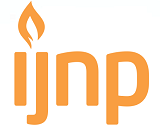Medula Spinalis Belt (MSB) Terhadap Penurunan Nyeri Penderita Nyeri Punggung Bawah pada Pekerja Batu Bata
DOI:
https://doi.org/10.18196/ijnp.v2i1.669Abstract
Low back pain caused by decreasing discus space and narrowing foramen invertebralis which can produce irritation of the nerve roots and with radiating back pain. The purpose of this research is to determine the eff ectiveness of medula Spinalis Belt (MSB) to reduce pain in coal workersin coal workers. Design of the research was quasy experimental with pre-post test design with control group design. the population were 30 people of which 15 persons for the intervention group and 15 the control group, and spinal cord Belt as a tool made by researcher. Data collection was performed by measuring the intensity of pain using the VAS, at the time before and after the intervention, and analysis done by t test (Paired t-test and independent t test). The result showed that there was a decrease in the average of intensity of low back pain in the intervention group after using the Medula Spinalis Belt. There was an increase in the average of intensity of low back pain in the control group after the post-test, and there is a signifi cant diff erence between the intensity of low back pain in the post-test of treatment group and the control group with p-value =0.000. There were two risk factor of LBP which are age and gender occurred from multivariate analysis with beta -0,32, sig 0,049. The use of Medula Spinalis Belt can reduce the intensity of low back pain. The use of Medula Spinalis Belt in patients with low back pain will serve to control the pain because it can limit or support the lumbar movement, so it is suggested to coal workers to use Medula Spinalis Belt to reduce pain in patients with lower back pain.Key Words: Medula Spinalis Belt (MSB), Low Back Pain, Pain
Downloads
Published
2015-06-20
Issue
Section
Articles
License
License
Articles published in the IJNP (Indonesian Journal of Nursing Practices) are licensed under a Attribution 4.0 International (CC BY 4.0) license. You are free to:
- Share — copy and redistribute the material in any medium or format.
- Adapt — remix, transform, and build upon the material for any purpose, even commercially.
This license is acceptable for Free Cultural Works. The licensor cannot revoke these freedoms as long as you follow the license terms. Under the following terms:
Attribution — You must give appropriate credit, provide a link to the license, and indicate if changes were made. You may do so in any reasonable manner, but not in any way that suggests the licensor endorses you or your use.
- No additional restrictions — You may not apply legal terms or technological measures that legally restrict others from doing anything the license permits.
Copyright
Authors who publish with IJNP (Indonesian Journal of Nursing Practices) agree to the following terms:
- Authors retain copyright and grant IJNP (Indonesian Journal of Nursing Practices) the right of first publication with the work simultaneously licensed under an Attribution 4.0 International (CC BY 4.0) that allows others to remix, adapt and build upon the work with an acknowledgment of the work's authorship and of the initial publication in IJNP (Indonesian Journal of Nursing Practices).
- Authors are permitted to copy and redistribute the journal's published version of the work (e.g., post it to an institutional repository or publish it in a book), with an acknowledgment of its initial publication in IJNP (Indonesian Journal of Nursing Practices).














